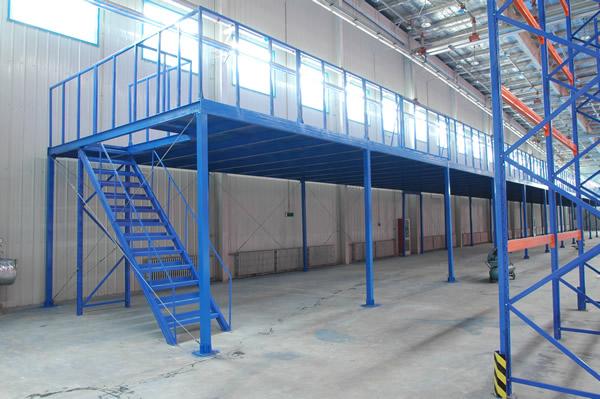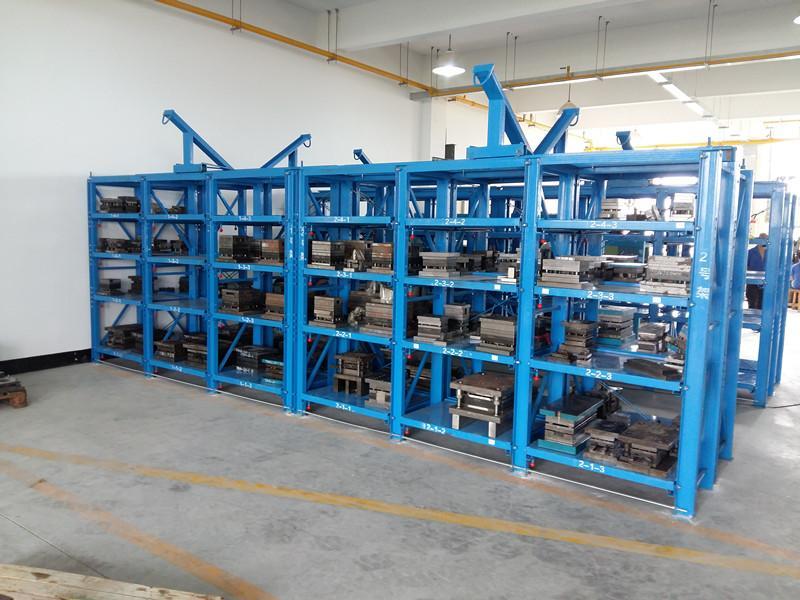In the fast-paced and highly competitive world of health and wellness, efficient logistics are paramount. Supplement brands face unique storage challenges: diverse product sizes (from small bottles to large tubs), significant weight variations, strict FIFO (First-In, First-Out) requirements for freshness, and often rapid inventory turnover. A well-designed supplement warehouse racking system is not just storage; it's a critical backbone for operational efficiency, product safety, and scalable growth. Choosing and implementing the right system requires careful consideration of several key factors.

1. Maximizing Space Utilization and Cube Efficiency
Supplement warehouses often operate with significant real estate costs. A primary goal of any supplement warehouse racking system is to maximize the use of available vertical and horizontal space.
Vertical Storage: Utilizing clear ceiling height is crucial. Selective pallet racking, the most common supplement warehouse racking system, excels here. Adjustable beam levels allow customization for different pallet heights, stacking multiple levels high. For very high ceilings (30+ feet), double-deep racking or pallet flow systems might be considered for specific SKUs, though accessibility needs careful weighing.
Dense Storage Options: For high-volume, homogeneous SKUs (like best-selling protein powders), drive-in or drive-thru racking systems offer exceptional density by eliminating aisles. Forklifts drive directly into the rack structure. While maximizing cube storage, these systems typically require FIFO (drive-thru) or LIFO (drive-in) discipline and are less suitable for a vast number of SKUs. Push-back racking provides a good middle ground, offering 2-5 pallet deep storage with good selectivity on the front pallet position.
Small Item & Carton Flow: Not all supplements arrive or are picked as full pallets. Incorporating shelving, bin systems, or carton flow lanes within the broader supplement warehouse racking system is essential for broken-case picking, sample storage, or small SKUs. Flow racks ensure FIFO automatically for fast-moving individual items or cartons.
Mezzanines: Leveraging air rights over receiving, packing, or staging areas with structural mezzanines creates valuable additional floor space for slower-moving inventory, offices, or value-added services without expanding the warehouse footprint.
2. Accommodating Diverse Load Characteristics and Weight Capacities
Supplements present a wide range of physical characteristics that directly impact racking design:
Weight Variations: A pallet of lightweight vitamin bottles behaves very differently from a pallet of dense creatine monohydrate or protein powder in large tubs. The supplement warehouse racking system must be engineered to handle the heaviest anticipated unit load per beam level. Overloading is a critical safety hazard. Structural calculations must account for point loads and overall system capacity. Upright frames and beams must be specified with appropriate load ratings.
Product Size and Pallet Dimensions: Standard 48"x40" pallets are common, but supplements often ship on smaller or non-standard pallets, or even skids. Beam lengths and frame depths must be configured to accommodate these variations without excessive overhang (a safety risk) or wasted space. Consideration for awkwardly shaped items (like large boxes of bars) is also needed.
Load Stability: Powders and liquids within containers can shift. Combined with potentially unstable pallet patterns or stretch-wrapped loads, this increases the risk of product falling. The supplement warehouse racking system should incorporate features like wire mesh decking (providing a solid base and preventing small items from falling), pallet supports, or column protectors to enhance stability and containment. Load beams should be designed to prevent pallets from being accidentally pushed through.
Fragility and Sensitivity: Some supplements are sensitive to light, moisture, or rough handling. While racking itself doesn't control environment, the system design should facilitate safe handling (minimizing vibration, impact risk) and potentially allow for segregated storage zones if needed.

3. Ensuring Optimal Accessibility and Picking Efficiency
Fast and accurate order fulfillment is critical in the supplement industry. The supplement warehouse racking system directly impacts how quickly workers can locate, retrieve, and put away products.
Aisle Width: Dictated by the material handling equipment (MHE). Wide-aisle racking (12-13+ feet) accommodates standard counterbalance forklifts. Narrow-aisle (NA) racking (8-10 feet) requires specialized narrow-aisle forklifts or reach trucks, significantly increasing storage density. Very-narrow-aisle (VNA) systems (6 feet or less) use guided turret trucks for maximum density but higher equipment costs. The choice depends on throughput needs, budget, and warehouse dimensions.
Selective vs. Dense Access: Selective racking offers direct access to every pallet location, ideal for a wide SKU base with moderate to high velocity. Denser systems like drive-in or push-back sacrifice some selectivity for space savings and are better suited for fewer, high-volume SKUs. The optimal supplement warehouse racking system often combines selective racking for the majority of SKUs with dense storage for top sellers or bulk ingredients.
Pick Facilitation: For case picking or broken-case picking, designing lower levels for easy pedestrian or order picker access is crucial. Integrating pick modules, flow racks, or shelving within the pallet racking structure creates efficient pick faces. The vertical location of fast-moving SKUs (often called "golden zone" - waist to eye level) within the racking significantly impacts picker productivity and ergonomics.
FIFO Management: Many supplements have expiration dates. Racking systems like pallet flow lanes (dynamic flow racks for pallets) or carton flow racks inherently enforce FIFO. In selective racking, disciplined warehouse management system (WMS) processes and potentially lane marking are essential.
4. Prioritizing Safety and Structural Integrity
Safety is non-negotiable in any warehouse, and the supplement warehouse racking system is central to it. Failure can lead to catastrophic accidents, product loss, and regulatory penalties.
Engineering and Installation: The system must be designed by qualified engineers and installed by certified professionals according to the manufacturer's specifications and relevant local/national codes (e.g., OSHA in the US, SEMA in the UK). This includes proper anchoring to the floor.
Load Capacity & Signage: Every component (upright, beam, deck) has specific load ratings. These must never be exceeded. Clear, visible load signage must be present on every rack bay. Regular inspections are mandatory.
Damage Prevention and Protection: Forklift impacts are a leading cause of rack failure. Robust column guards (protectors), end-of-aisle guards, and rack protectors are essential investments. Encourage careful operator training and enforce speed limits. Wire mesh decking prevents items from falling and enhances stability.
Seismic Considerations: In earthquake-prone regions, the supplement warehouse racking system must be specifically designed and braced to withstand seismic forces, protecting both personnel and valuable inventory.
Regular Inspections: Implement a formal, documented rack inspection program (daily visual checks by operators, periodic professional inspections by qualified personnel) to identify damage, overloads, or misalignment early.
5. Building for Scalability and Future Flexibility
The supplement market is dynamic. Brands experience growth, product lines evolve, and operational needs change. A rigid supplement warehouse racking system can quickly become a bottleneck.
Modular Design: Selective pallet racking is inherently modular. Frames and beams can be added, reconfigured, or relocated relatively easily as storage needs shift. Choosing a system with readily available, standardized components is key.
Adaptable Beam Levels: Beams that are easily adjustable without tools allow quick reconfiguration for different product heights or the introduction of new packaging formats.
Integration Potential: Consider how the base racking system might integrate with future automation (e.g., automated storage and retrieval systems - AS/RS) or other technologies like pick-to-light or put-to-light systems. Designing with clear heights and aisle widths that could accommodate future automation is prudent planning.
Expansion Planning: When initially designing the layout, consider potential future expansion areas. Leaving space for additional racking rows or planning for the extension of existing runs can save significant time and disruption later. Ensure the floor slab can handle the future load.
System Compatibility: If using a combination of racking types (selective, flow, shelving), ensure they are compatible in terms of dimensions and load transfer, or plan distinct zones effectively.
A supplement warehouse racking system is a significant investment, but it's one that directly impacts nearly every aspect of warehouse performance: storage capacity, labor efficiency, order accuracy, inventory control, safety, and ultimately, customer satisfaction. There is no universal "best" system; the optimal solution depends entirely on the specific product mix, order profiles, throughput requirements, facility constraints, and budget of the supplement business.
Successful implementation requires thorough analysis, careful planning, professional design and installation, and ongoing maintenance and training. By prioritizing space optimization, load accommodation, accessibility, safety, and scalability, supplement companies can build a warehousing infrastructure that not only supports current operations but also provides a robust platform for sustained growth and success in a demanding market. Choosing the right supplement warehouse racking system is a strategic decision that lays the groundwork for efficient and resilient logistics.







